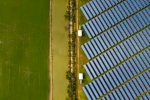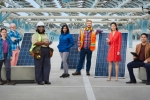
The infrastructure sector sits at a collision point of global disruptions, including shifts in capital availability, evolving social and environmental priorities, and rapid urbanisation. However, the emergence of COVID-19 introduces an altogether new set of challenges. The full impact of the pandemic will take years to play out. Yet in the near term, we believe it will affect governments’ ability to finance large-scale projects. Most countries faced a gap between infrastructure needs and financial resources before the pandemic hit; that gap is now larger as a result of it.
Successful infrastructure delivery demands close alignment and collaboration among a wide range of participants, each with its own agenda and interest. The result? No single player acting alone can effect real change in the sector.
This is the fourth article in a series outlining the overarching forces that will shape the future of the infrastructure industry. The first looked at the immediate impact of COVID-19. The second considered developments in financing. The third looked at the impact of evolving technology. And this final piece will address the need for resilience and sustainability.
Two critical trends: Urbanisation and climate change
In developed and developing countries around the world, infrastructure delivery is facing two key challenges. Both are integrally connected to the global issue of sustainability, and both are likely to have a disproportionate impact on emerging economies.
The first critical trend is urbanisation. The global urban population, currently around 3.9bn people, is expected to grow to around 6.3bn by 2050 and comprise 70% of the total projected global population in that year. This growth in city dwellers is fastest in a handful of emerging markets and developing economies — namely India, China and Nigeria — which will collectively contribute more than 35% of overall growth in the urban population between 2018 and 2050.
Against this background, it will be vital for urban planning, construction, and water and waste management projects to address the needs of burgeoning city populations. Energy provision will need to be sustainable to reflect ongoing changes in the ways people live and move around. Urbanisation is already putting transport systems under intensifying pressure: new road and rail systems are difficult to construct in environments that are already built up.
The second challenge is from climate change, a problem that cities exacerbate. According to UN Habitat, cities consume 78% of the world’s energy and produce more than 60% of greenhouse gas emissions. Infrastructure construction and its use, such as power plants, buildings and transport, are large contributors to that figure. Additionally, 90% of urban areas are situated along coastlines, making them especially susceptible to the predicted rise in sea levels. Cities in emerging economies are particularly vulnerable, because they are usually characterised by rapidly swelling informal settlements that lack basic infrastructure and services, which exposes their communities to the harshest impacts from changing climates, such as extreme weather events and flooding. Climate change–driven disasters accounted for about 91% of the 7,255 major disasters that occurred between 1998 and 2017.
Stricter emissions targets
Past trends suggest that infrastructure development will not keep up with demand — making it difficult for governments to deliver an adequate standard of living and meet modern-day expectations. Overlay the targets and commitments being set at a policy level, such as the UN's Sustainable Development Goals (SDGs), and the challenge escalates even further. The UK was the first major economy to legislate to reduce all greenhouse gas emissions to net zero by 2050. The EU has recently announced its own €100bn European Green Deal, setting out its ambition to make Europe the first climate-neutral continent, also by 2050.
Achieving these targets will demand a different approach to infrastructure planning in order to build low-carbon, climate-resilient and sustainable projects at scale. It will also require accelerating the transition to more sustainable forms of power — an area where great progress is being made, but more needs to be done and a reimagining of transport, including ‘smart mobility’ in urban environments designed to ease congestion and smooth travel flows while also helping to reduce harmful emissions. In addition, older assets will need to be decommissioned or retrofitted to adapt to climate change. (See “The rise of stranded assets.”)
Opportunities in emerging markets
The prospect of urbanisation and climate change brings huge challenges — and opportunities — for investment in sustainable infrastructure across all sectors.The International Monetary Fund (IMF) estimates that the spending required to meet the SDGs in 2030 amounts to US$2.6tn — or 2.5% of the 2030 world GDP — in 121 emerging-market economies and low-income developing countries.
According to the World Bank, new climate-smart infrastructure alone could cost low- and middle-income countries anywhere between 2% (US$640bn) and 8% (US$2.7tn) of GDP per year through 2030. Emerging markets are expected to account for most of the projected doubling of infrastructure spending by 2050, primarily through greenfield projects. A recent International Finance Corporation (IFC) report concluded that cities in emerging markets have the potential to attract more than US$3.1tn in climate-related investments in renewable energy, public transportation, waste and water by 2030. Stakeholders in emerging markets have a unique opportunity to grow their economies and build infrastructure in more sustainable ways by learning from the climate impacts of cities in more developed jurisdictions.
Designing for the life cycle of an asset
At the same time, assets in developed markets may need to be adapted based on changing needs among users. Consider car parks. In the UK, the average car is in use only 4% of the time. Increasing adoption of more environmentally friendly electric vehicles (EVs) such as cars, vans and bikes means that in the medium term, there is a growing need to adapt car parks into charging stations. In the longer term, car parks could become part of the electricity grid, helping to store energy more evenly and removing supply bottlenecks. Similarly, a rise in autonomous vehicles (AVs) could trigger a move towards suburban or out-of-town car parks. Designing and building infrastructure for flexible uses during its life cycle will be key.
A similar principle is at play in the power sector. The move to cleaner infrastructure such as EVs and the electrification of transport is not itself a fully carbon-positive story. Demand for battery metals — cobalt and nickel — continues to grow rapidly and could face a supply crunch by the mid-2020s. Similarly, global wind technologies are expected to require an average of 450,000 tonnes of copper per annum out to 2022, increasing to 600,000 tonnes per annum out to 2028. It is undeniable that extracting and refining metal also produces carbon.
Companies and investors are assessing their existing portfolios to identify any assets that threaten to intensify global warming. According to estimates by the Financial Times’ Lex team, around US$900bn — one-third of the current value of big oil and gas companies — would disappear if governments became more aggressive in their attempts to restrict the rise in global temperatures.39 Although the risk of such ‘stranded assets’ is most naturally associated with the energy sector, other companies will be affected as well. For example, owners of assets such as petrol stations or car parks will need to consider how to repurpose or divest those assets. Stranded asset risk is set to become an increasing focus and consideration going forward.
As demand for renewable power increases, structures will need to be designed in a way that maximises lifetime value while preserving the flexibility for reuse along the entire life cycle of materials. Wind turbine blades are just one example of a problematic early design. The first generation of blades was installed in the 1990s, and many are reaching the end of their 25-year working life expectancy. Disposing of the blades in an environmentally friendly way is a growing problem. Some are being converted into injectable plastics, or highly waterproof boards that can be used in construction. However, many are simply being buried in landfills.
A more sustainable, circular-economy approach for all infrastructure assets will require a shift in procurement strategies, challenging the construction industry to consider the full environmental impact of the materials used, the finished asset, operations across its life cycle and ultimately its decommissioning.
Effective corporate-level measurement will also be required. Sustainability as a concept only works only if it can be measured and checked. Increasingly, the impact of a business on the environment and broader society is as important as its financial return. Despite the growing focus and desire of stakeholders to consider environmental and sustainability impacts, many current business models are not equipped to quantify and monetise this component, meaning it is removed from traditional ROI decisions. More comprehensive frameworks are needed to determine the various ways that a company or asset generates, or potentially destroys, value, in both the short and long term. This will help decision makers to consider the net impact of their actions, beyond financial results. (See “A metro project applies advanced metrics.”)
The rise of stranded assets
Companies and investors are assessing their existing portfolios to identify any assets that threaten to intensify global warming. According to estimates by the Financial Times’ Lex team, around US$900bn — one-third of the current value of big oil and gas companies — would disappear if governments became more aggressive in their attempts to restrict the rise in global temperatures. Although the risk of such ‘stranded assets’ is most naturally associated with the energy sector, other companies will be affected as well. For example, owners of assets such as petrol stations or car parks will need to consider how to repurpose or divest those assets. Stranded asset risk is set to become an increasing focus and consideration going forward.
A metro project applies advanced metrics
One example of a project applying a more comprehensive approach to quantifying its environmental impact is the Stockholm metro extension. The US$3.35bn project, currently underway and slotted for completion by 2026, comprises 20 kilometres of new track and 11 new train stations. To reduce the carbon footprint of the stations’ construction, the project team first calculated the cost and the carbon footprint for a model station. Concrete and steel were the main contributors to the carbon footprint. The team then identified measures to reduce the amount of new material required, redesigning the station and replacing some design aspects with recycled steel and other materials. A second iteration of the process — a calculation followed by a redesign — reduced the carbon footprint even further. Ultimately, the team was able to reduce the overall carbon emissions of the project by 40%, along with a 30% reduction in costs.
Clearing the bottlenecks
What needs to happen for infrastructure to play its full potential role in reducing climate change? Companies need to broaden their criteria for procurement decisions. Rather than focusing on the lowest-cost option, companies need to apply a framework that considers the total economic, social, environmental and financial impact over the whole life of the asset. This is more difficult in developing countries, where affordability is the key consideration and infrastructure is badly needed to provide services to growing populations.
To date, the supply of bankable sustainable infrastructure projects has been inadequate and subscale, particularly in low- and middle-income countries. The process is hampered by the fact that future climate change is difficult to model or predict, bringing a degree of uncertainty to the lifespan of sustainable assets. Also, there are some types of climate-required assets that do not have an obvious revenue stream: for example, flood defence systems or carbon capture and storage schemes.
One positive development in this space is the growing base of stakeholders — including investors and governments — looking to develop and benefit from more energy-efficient and sustainably built assets. Increased shareholder activism and a focus environmental, social and governance (ESG) considerations has pushed significant pools of capital towards more sustainable projects, as climate change impacts are increasingly being recognised as a key risk for private investors.
As the ESG agenda gains momentum, several worldwide standards and frameworks have emerged to facilitate the integration of climate-related factors into investment decisions. These include the guidelines from the Task Force on Climate-related Financial Disclosures (TCFD) and the European Commission’s recently announced sustainability taxonomy and disclosure regulations, which are designed to formalise investors’ disclosure obligations, create positive carbon benchmarks and minimise the potential for ‘greenwashing’ in the market.
Theoretically, therefore, there is no shortage of finance for sustainable infrastructure. And though sustainable infrastructure can be more expensive than high-carbon equivalents, consequently offering a lower return (before subsidies and taxes like carbon credits), some solutions, such as wind farms (reduced build and therefore shorter payback periods compared to fossil fuel power plants), are now making commercial sense in addition to making environmental sense.
To clear the bottlenecks and increase the flow of this investment, multilateral development banks (MDBs) are prioritising inclusive, resilient and sustainable technology-driven infrastructure. Working hand in hand with governments and the private sector, they are looking to strengthen policies, legislation and regulations, and creating a pipeline of bankable projects to boost sustainable infrastructure investments.
Several other measures will increase the flow of finance to sustainable infrastructure. These include close cooperation and partnerships among the various participants — impact investors, sustainable businesses, governments, financial institutions and others — as well as improved access to markets (especially in developing economies). Also required are high-quality education and skills training; further involvement from international financial institutions; and smart public policy, including incentives and regulations supporting sustainable development.
Building a sustainable future
Ultimately, the global shift to sustainable infrastructure will require interventions and collaborative action from multiple participants. These include not just public–private cooperation and consolidated effort, but also new ways of measuring impacts and the development of innovative instruments geared to financing green infrastructure projects. Also important at a national and regional level will be factors such as regulatory frameworks, subsidies and tax regimes. These overlapping considerations mean the task of funding and building sustainable infrastructure is arguably one of the biggest and most complex challenges that the global financial and political system has ever faced. But it’s a challenge that must be overcome.
References
[1] United Nations Department of Economic and Social Affairs, 2018 Revision of World Urbanization Prospects, 2018: https://population.un.org/wup/.
[2] United Nations Climate Action, “Cities and Pollution contribute to climate change,” accessed in July 2020: https://www.un.org/en/climatechange/cities-pollution.shtml.
[3] Deblina Saha, “Low-carbon infrastructure: an essential solution to climate change?” World Bank Blogs, 5 Apr. 2018: https://blogs.worldbank.org/ppps/low-carbon-infrastructure-essential-solution-climate-change.
[4] United Nations Department of Economic and Social Affairs, “Water and cities,” International Decade for Action, ‘Water for Life,’ 2005–2015, accessed in July 2020: https://www.un.org/waterforlifedecade/water_cities.shtml..
[5] United Nations Office for Disaster Risk Reduction, Centre for Research on the Epidemiology of Disasters, Economic Losses, Poverty & Disasters, 1998–2017: https://www.unisdr.org/2016/iddr/IDDR2018_Economic%20Losses.pdf.
[6] United Nations Department of Economic and Social Affairs: Sustainable Development, “The 17 Goals,” accessed in July 2020: https://sustainabledevelopment.un.org/?menu=1300.
[7] European Commission press release, “The European Green Deal sets out how to make Europe the first climate-neutral continent by 2050, boosting the economy, improving people's health and quality of life, caring for nature, and leaving no one behind,” 11 Dec. 2019: https://ec.europa.eu/commission/presscorner/detail/en/IP_19_6691.
[8] Alan Livsey, “Lex in depth: the $900bn cost of ‘stranded energy assets’,” Financial Times, 4 Feb. 2020: https://www.ft.com/content/95efca74-4299-11ea-a43a-c4b328d9061c.
[9] Vitor Gaspar, David Amaglobeli, Mercedes Garcia-Escribano, Delphine Prady and Mauricio Soto, IMF Staff Discussion Note: Fiscal Policy and Development: Human, Social, and Physical Investment for the SDGs, 23 January 2019: https://www.imf.org/en/Publications/Staff-Discussion-Notes/Issues/2019/01/18/Fiscal-Policy-and-Development-Human-Social-and-Physical-Investments-for-the-SDGs-46444.
[10] EABW Editor, “How To Scale Up Sustainable Infrastructure,” EABW News, 6 Jan. 2020: https://www.busiweek.com/how-to-scale-up-sustainable-infrastructure/.
[11] Pascal Mittermaier, “The Coming Rise of Urban Infrastructure: Greening the Gray,” HuffPost, 31 Aug. 2017: https://www.huffpost.com/entry/the-coming-rise-of-urban-infrastructure-greening-the_b_59a85788e4b00ed1aec9a677.
[12] International Finance Corporation, Climate Investment Opportunities in Cities: An IFC Analysis, 2018: https://www.ifc.org/wps/wcm/connect/topics_ext_content/ifc_external_corporate_site/climate+business/resources/cioc-ifc-analysis.
[13] John Bates and David Leibling, “Spaced Out: Perspectives on parking policy,” The Royal Automobile Club Foundation for Motoring, July 2012: https://www.racfoundation.org/assets/rac_foundation/content/downloadables/spaced_out-bates_leibling-jul12.pdf.
[14] Julian Kettle, “Mining sector faces energy transition conundrum,” Financial Times, 18 Feb. 2020: https://www.ft.com/content/36ef7ab2-4f44-11ea-95a0-43d18ec715f5.
[15] Padraig Belton, “What happens to all the old wind turbines?” BBC News, 7 Feb. 2020: https://www.bbc.co.uk/news/business-51325101.
[16] Johanna Lehne and Felix Preston, “Making Concrete Change: Innovation in Low-carbon Cement and Concrete,” Chatham House, 13 June 2018: https://reader.chathamhouse.org/making-concrete-change-innovation-low-carbon-cement-and-concrete.
[17] PwC, Understanding Total Impact Measurement and Management (TIMM), accessed in July 2020: https://www.pwc.co.uk/who-we-are/our-purpose/performance/valuing-our-total-impact/total-impact-measurement-management.html.
[18] Construction Climate Challenge, “Stockholm Metro Extension project reduces carbon from planning to completion,” 28 Aug. 2017: https://constructionclimatechallenge.com/2017/08/28/stockholm-metro-extension-project-reduces-carbon-from-planning-to-completion/.
[19] PwC and Global Infrastructure Facility, Increasing private sector investment into sustainable city infrastructure, January 2020: https://www.pwc.com/gx/en/industries/assets/pwc-increasing-private-sector-investment-into-sustainable-city-infrastructure.pdf.
Contact us

Global Capital Projects and Infrastructure Leader, PwC United Kingdom
Tel: +44 7764 235 239



















